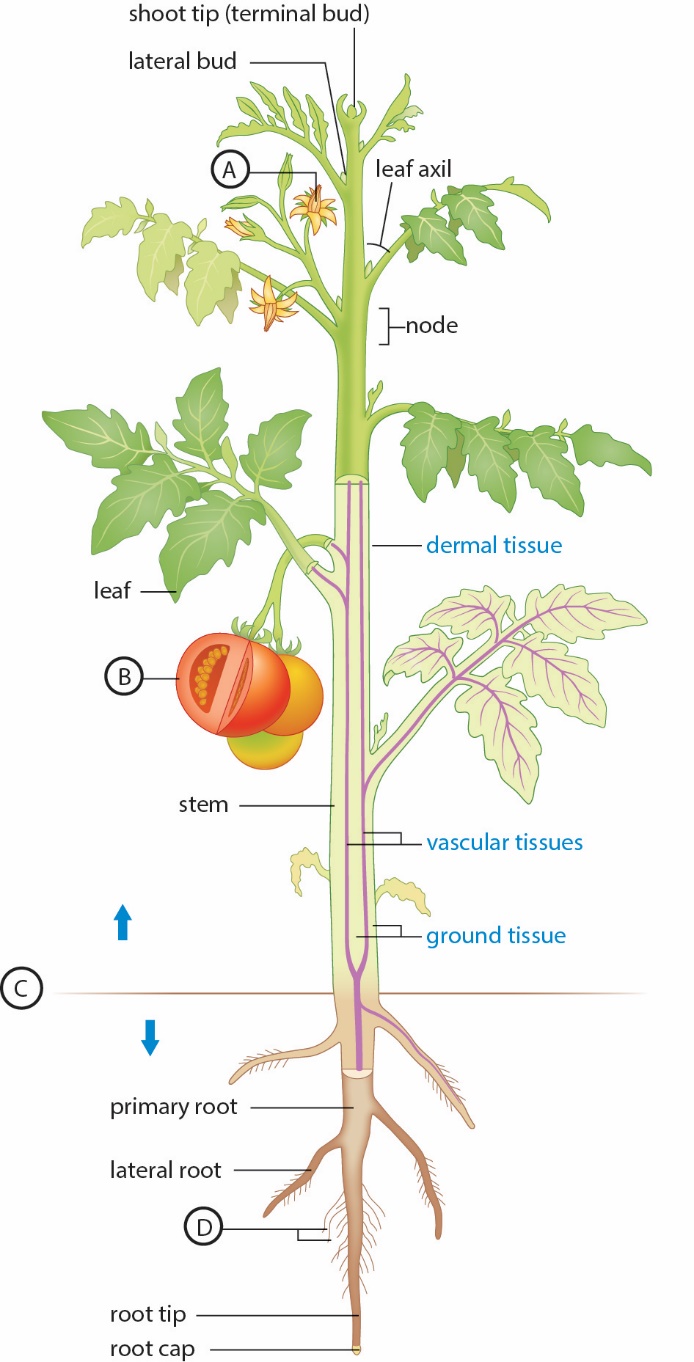As a fish forces water across its gill, the blood flowing through the gill
a. picks up O2 over the whole route of exchange.
b. picks up O2 during the first half of the exchange path, then equilibrates.
c. picks up O2 over the second half of the exchange route only.
d. removes O2 from the gill and then releases most of its O2 back to the gill.
e. releases O2 over the whole route of exchange.
A; Countercurrent exchange takes place when the fluids exchanging a substance flow in opposite directions. This produces a concentration gradient across the whole route of exchange. Diffusion therefore occurs over the entire route, not just in one part.
You might also like to view...
Birds typically have a large sternum with a bladelike vertical protrusion to which flight muscles attach called:
A. Radius B. Ulna C. Breastbone D. Keel E. Humerus
Labeling.The following statements refer to the figure below showing the general body plan of a plant.
?

A. ground tissue only B. root system C. shoot system D. stalk E. light-independent parts
You are studying the function of a recently identified gene in C. elegans. You perform genetic screens for several months in an attempt to isolate loss-of-function gene mutations, but your efforts are unsuccessful. Your advisor suggests you try another approach to eliminate gene function. The best technique to accomplish this goal would be
A. use a C. elegans strain with a homozygous TFIID mutation to prevent the translation initiation complex from forming. B. use RNA interference to prevent mRNA translation. C. to design a repressor to bind to the operon of this gene. D. use a histone deacetylase to induce a transcriptionally inactive state.
The cells released from reproductive structures such as mushrooms that can develop into a new organism without fusing with another cell are called ________
Fill in the blank(s) with correct word